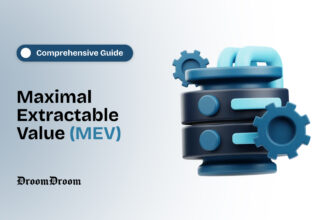Navigating art investment risks and rewards involves a comprehensive assessment of the market’s potential, value, and impact. If one of your considerations is to explore the art world as an investor, this guide walks you through the ins and outs of fine art investments.
Learning the intricacies of navigating art investment risks and rewards starts from acknowledging the significance of art pieces, why they appreciate over time, and what hindrances you are likely to encounter as a collector or investor.
Background: Why Do People Value Art?
When talking about the value of art, a peer-reviewed study by the Internet Encyclopedia of Philosophy says we should take into account certain elements that contribute to or detract from a piece’s value when considered as an artwork.
Different pieces could manifest different composite values, but for someone to appropriately examine the value of a work, determinants to take into account may include artistic value, aesthetics, moral, or cultural significance.
But art could be much more than these determinants, a piece of art could light up a room, spark a conversation, have a meditative effect, communicate a story, and make a great investment.
The last point is particularly important for this guide, art as an investment vehicle. One of the primary reasons for investing in art is its ability to maintain or appreciate value, unlike stocks which tend to move up and down due to price fluctuations. Art can hold value for a long time, and in many cases, investors have used it as a means to hedge against inflation.
The Rewards of Art Investments
Investing in art supports millions of people who rely on the art business for their livelihoods. These include artists, consignors, gallerists, auction house staff, and among others. Art investments also have the potential to support cultural institutions such as museums and galleries. In the United States alone, artistic institutions and performing arts centers have total assets valued at $58 billion under their management.
It is also possible to support charity through art by attaching social impact to prominent art pieces. A good example is the ‘Power of the Reconnected World’, an art collection by artist of the year multi-award winner Sacha Jafri – this collection is selling for $250,000 and proceeds will be donated to the Global Gift Foundation.
Let’s discuss the rewards of investing in art as an asset class:
Profitability
A study by the Department of Market Analysis and Research at Cracow University of Economics says the rate of return from works of art is considered in two aspects, the price of the work and non-financial aspects like the social or philosophical significance of an art. One of the best things about these aspects is that their consideration makes it impossible for an artwork to plummet in market/price value. As such, an investment in art will always generate some level of profitability if left to accrue value over time.
Diversification
Art as an asset class can be an effective method for diversifying one’s investment portfolio. The problem is that art can be expensive for most people to afford it as an investment. This was the case until the Real-World Assets (RWAs) narrative started gaining ground, and a company like Artfi which identified a gap in the sector quite early introduced fractionalized ownership. Hence, anyone who cannot afford $250,000 to invest in an art piece by a top artist like Sacha Jafri can still afford to buy a share for less than $1,000 through fractional ownership.
When the art appreciates, their share, no matter how small it might have been, also appreciates. While this approach is a great way to bring masses of retail investors to the art market, it also serves as an ingenious method for diversifying one’s portfolio of investments, including art portfolio diversification.
Navigating Art Investment Risks and Rewards with Web3
For decades the traditional art market has faced the following risks:
- High cost associated with purchasing valuable work
- Exclusivity of the art sector
- Verifying authenticity
- Custodial challenges
- Tax obligations
- Limited access to knowledge
- Lack of liquidity
Thanks to advances in technology, the rise of the blockchain is helping eliminate many of these challenges.
Breaking Down Capital Requirements
The blockchain and its tokenization aspects have made it possible to represent an artwork on-chain as a real-world asset, split ownership across many investors, and make investment affordable to a wider pool of individuals.
Widening Accessibility and Improving Liquidity
Fractional ownership has not only increased the number of people who partake in art investments but improved market liquidity due to reduced cost of entry for many aspiring investors.
Eliminating Provenance Challenges
Issues to do with provenance and authenticity are also a thing of the past since meta details of art are decentralized, transparent, and available to everyone through the blockchain. According to Asif Kamal, the CEO and founder of Artfi, one of the roles of a custodian in the world of real-world assets is providing proof of reserves. In art, authenticity and provenance are achieved by certifying artworks and in case the art has to be tokenized, a permanent record of this certificate is stored on the blockchain.
Artfi is an art democratization company that aims to bring art investments to the masses and is also adding another layer to this model by introducing an art gallery to solve the custodial challenges of fractionalized art ownership.
Solving Custodial Challenges
If many people own a piece of art, it becomes a challenge to decide who among them will keep it. Artfi is introducing the Artfi Museum, a gallery in Dubai to showcase the artworks that the company will manage on behalf of its investors.
AI-based Knowledge Base for Providing Education About the Art Business
Better yet, Arti has integrated its art marketplace with an AI-based knowledge base which will also become an integral feature of the physical gallery. This AI knowledge base will feature deep tech avatars that tell the history of the pieces that the gallery holds. Furthermore, the company is pioneering and expanding an ambassador program that will make information about the sector accessible to interested individuals.
Thanks to fractional ownership; investors have the opportunity to sell their units for profit when the artwork appreciates, or receive royalties when a piece is sold on the secondary market.
Conclusion
Navigating art investment risks and rewards might be all sorted out for you due to advancements in technology but it’s also important to conduct a comprehensive risk assessment before entering the art investment market.
There is so much to learn from established professionals and it is advisable to consult to avoid the pitfalls of getting scammed. On the upside, investing in art is rewarding and given the benefits of emerging companies like Artfi which want to support art enthusiasts like you, the road has become even easier, less risky, and more affordable.
















